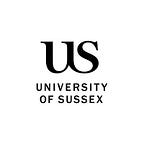“I have always wanted to explain things to people”
Shobita Bhumbra, PhD researcher in quantum physics, is among University of Sussex scientists taking part in Soapbox Science in Brighton on Saturday, 1 June 2019.
Soapbox Science is a good cause. I feel like in the scientific community it’s not as much of a problem thinking about women in science. But in the wider public there’s still a perception that generally it’s men who do science. Soapbox Science is one of the things that’s helping to change that.
I am not going to say words like ‘momentum transfer’ — I am going to use more intuitive concepts to get these ideas across. Scientists have developed a specific terminology that can sometimes push people away and intimidate them, although it does explain things more succinctly once the concept is there. That’s the job of science; when you realise you have understood something that’s complex.
What I am trying to demonstrate in my Soapbox moment is the Doppler effect, which is about how energy frequencies change as you are moving closer to or further away from a source. We notice this when we hear ambulance sirens. The pitch changes as the ambulance passes you.
In my research we use the Doppler effect to cool atoms with the energy from laser beams. Usually when people think of lasers they think of things exploding or catching fire, and so it’s counter intuitive that you would use lasers to cool things.
I’m using beanbags to represent the photons (light particles) in a laser beam, with different colours representing different energies. I have Velcro on them because my volunteer, who represents an atom, will be wearing a Velcro shirt. So I’ll be throwing beanbags at her to show how different energies do and don’t get absorbed by the atom. Only the ones that get absorbed (stick to the T-shirt) cause the atom to slow down and cool.
When atoms are cooled to just a fraction above absolute zero they have so little energy that a whole group will act almost as one atom with cool quantum properties. We can then manipulate this cloud using different magnetic fields to move it, allowing us to measure very small currents in samples.
My background is in biochemistry and genetics, so I am attempting to merge the two fields. I want to use these ultracold atoms to see how tiny currents help change stem cells in neurons (nerve cells). This could potentially lead to treatments for dementia and brain damage.
There’s a lot of collaboration with different groups across the University, which I really like. After my first degree at the University of Nottingham, I worked in the pharmaceutical industry for a while and then got a job at Sussex as a lab technician before being offered the opportunity to do a PhD in Professor Peter Kruger’s Quantum Systems and Devices group.
I have always enjoyed understanding things. I remember when I was in school I wasn’t always popular because I wanted to explain things to people. When I was five years old people used to make fun of me for that. I can be lazy, but I really enjoy learning and understanding when I am in a group. It’s a bit like going to the gym, you might think you’re too tired but when you are there you’re thinking, oh, this is great.
Interview by Jacqui Bealing
This profile is part of our This Sussex Life series.
Visit the University of Sussex website
